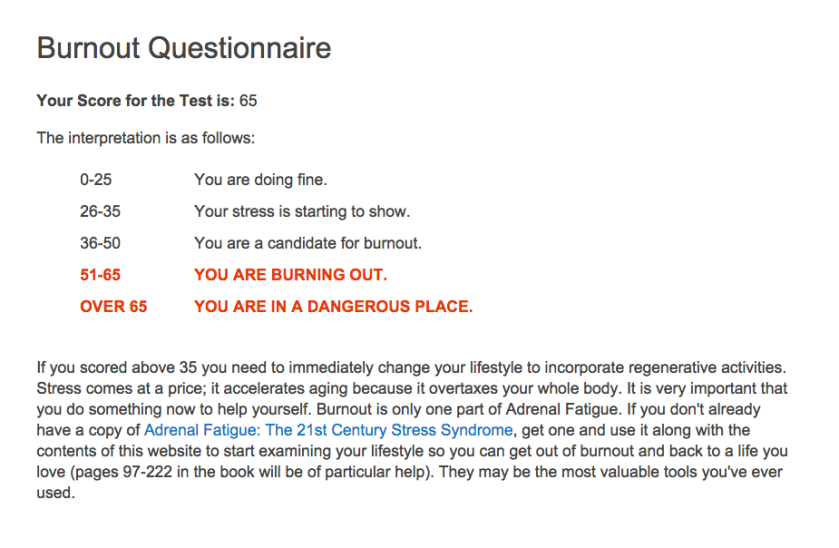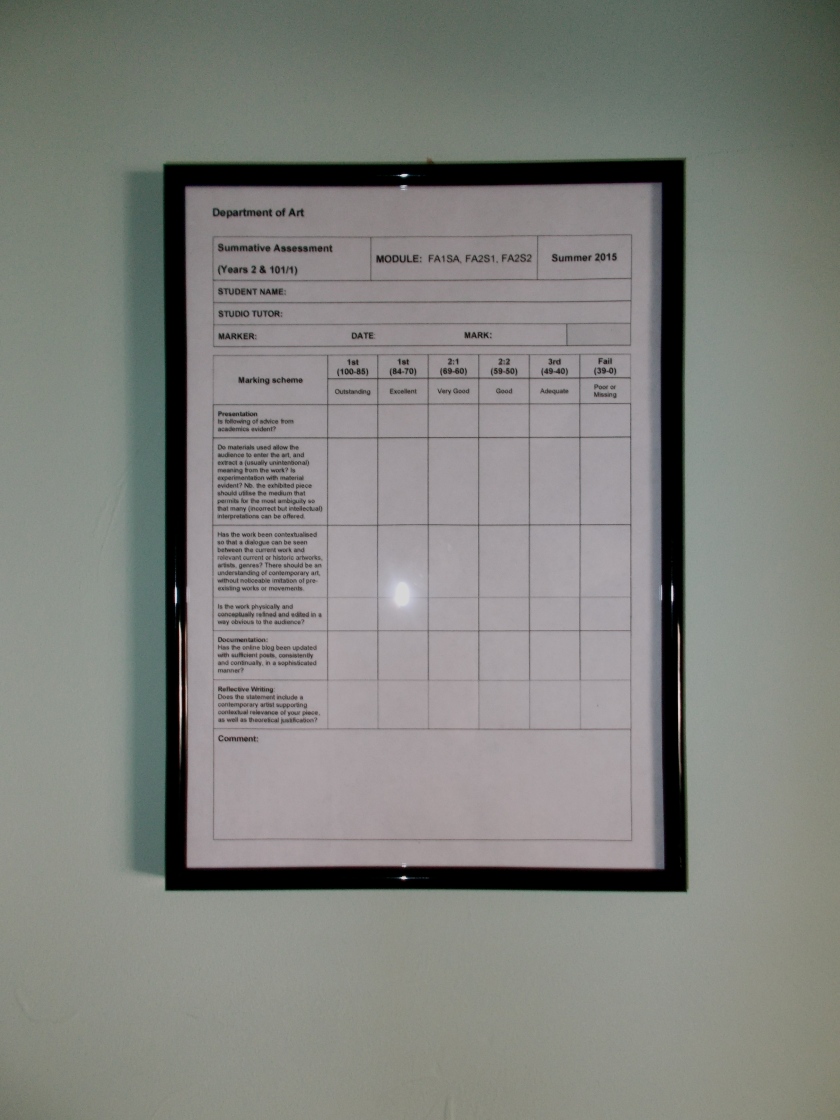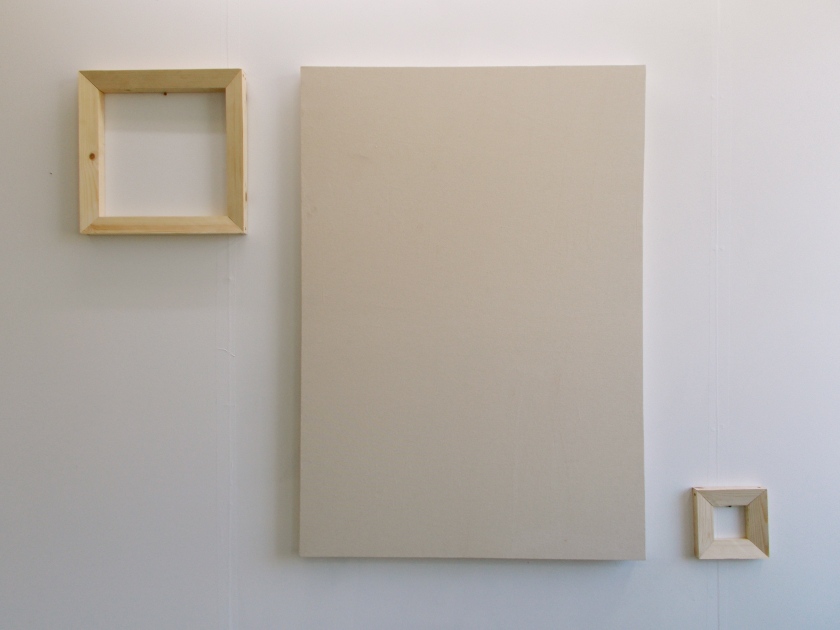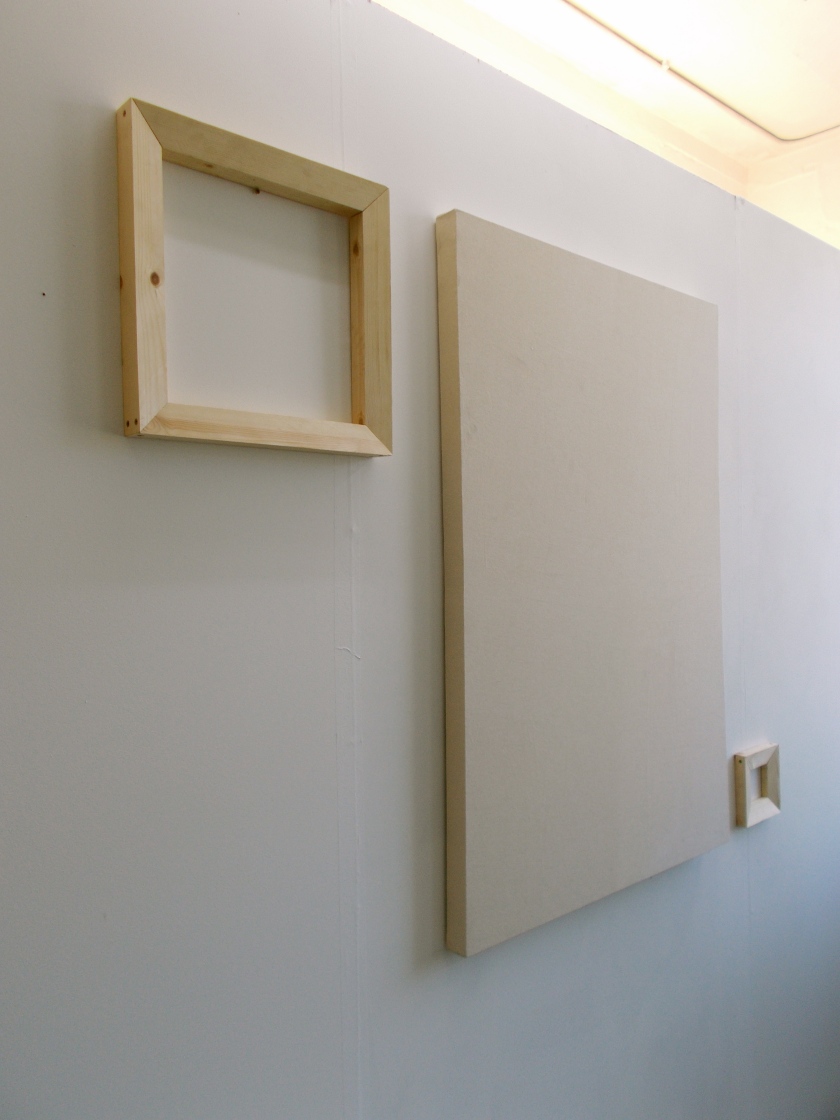This series consists of three works aimed for educating students: a comparison of an artist and art student, tips for being a successful art student, and finally an art mark scheme. As a whole, the piece aims to express frustration and flaws with the (art) education system, and it is framed because it should be considered as significant – it is easy to ignore the negative aspects of a situation, but this piece aims for individuals to acknowledge them.
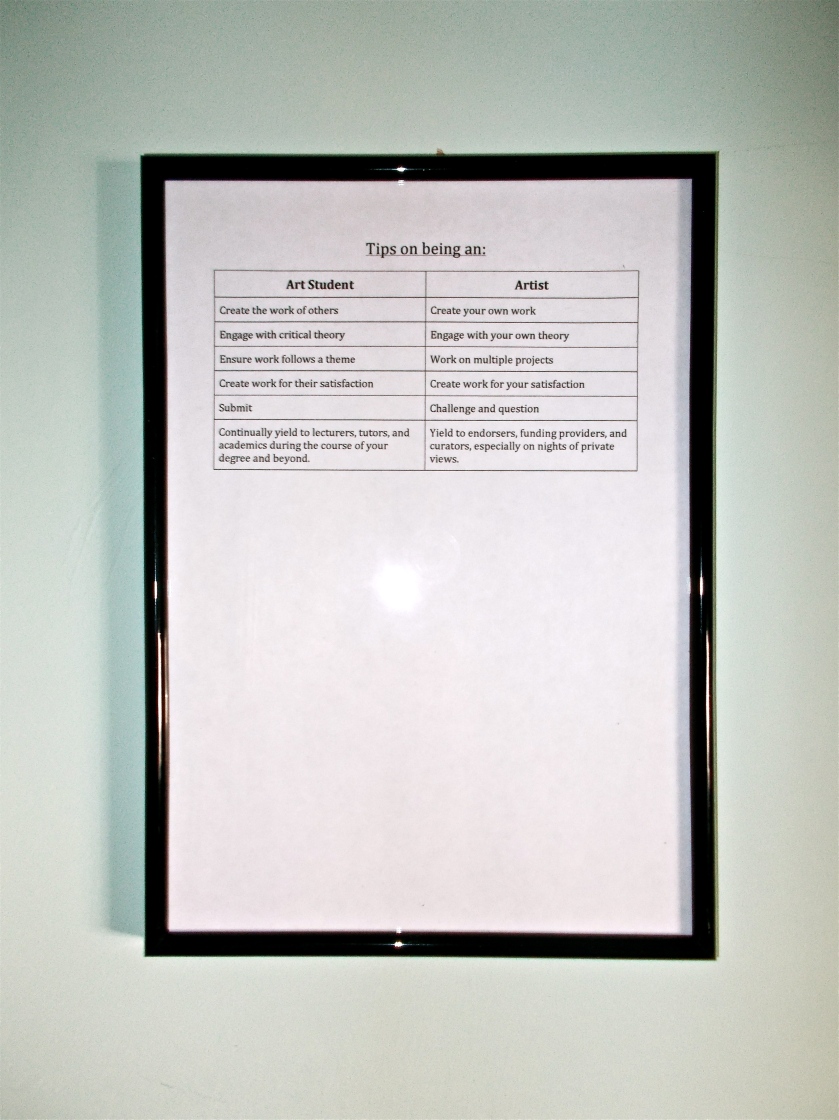
Comparison of art student and artist
Art tips
The comparison questions whether an art student prepares you for bring an artist, and although there are similarities in the role, there are some major differences that I think should be considered. For example, an artist does occasionally create sporadic works, not everything is created thematically.
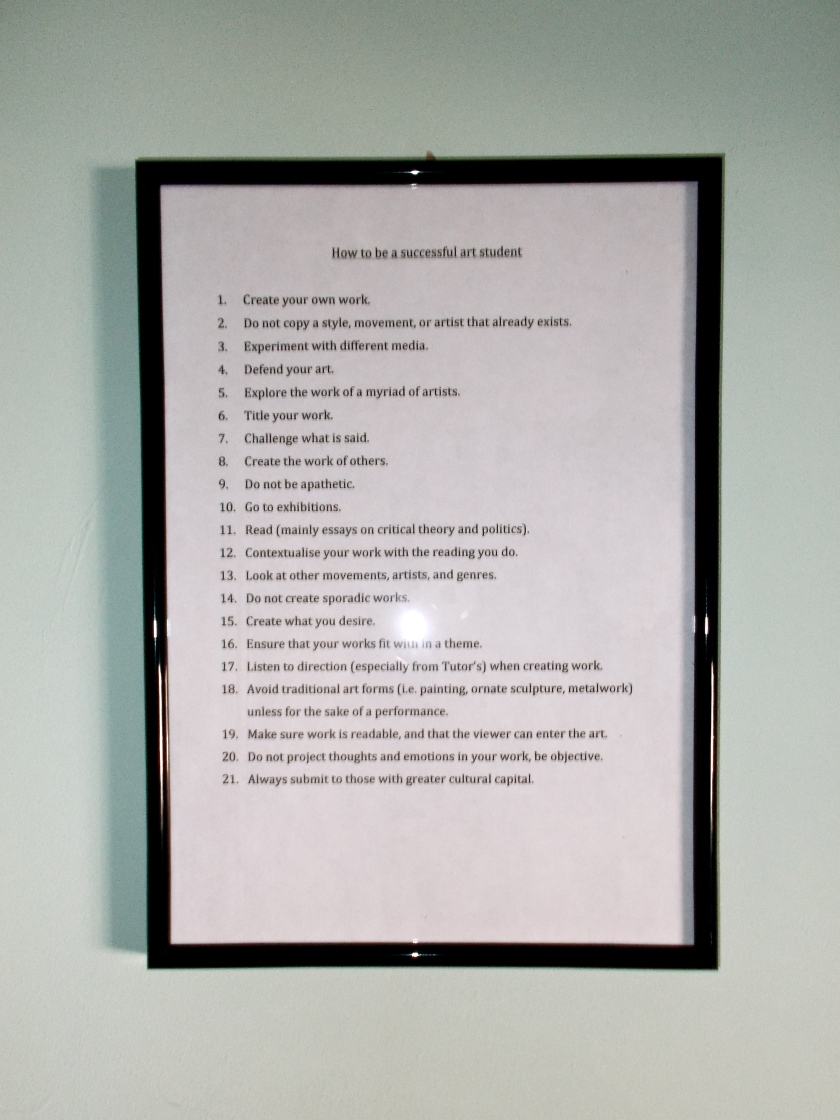
Tips on being a successful art student
How to be a successful art student
Tips for being a successful art student consists of a set of rules that students should follow if they want to achieve a ‘good’ degree. All of the points are valid, but also contradictory, and this is reflects the contradictory nature of the degree. I think it is important for students to realise that there is no right answer, and that art is subjective. So regardless of what you do, you will not always win, and sometimes you have to contradict yourself in a similar fashion to the art institution.
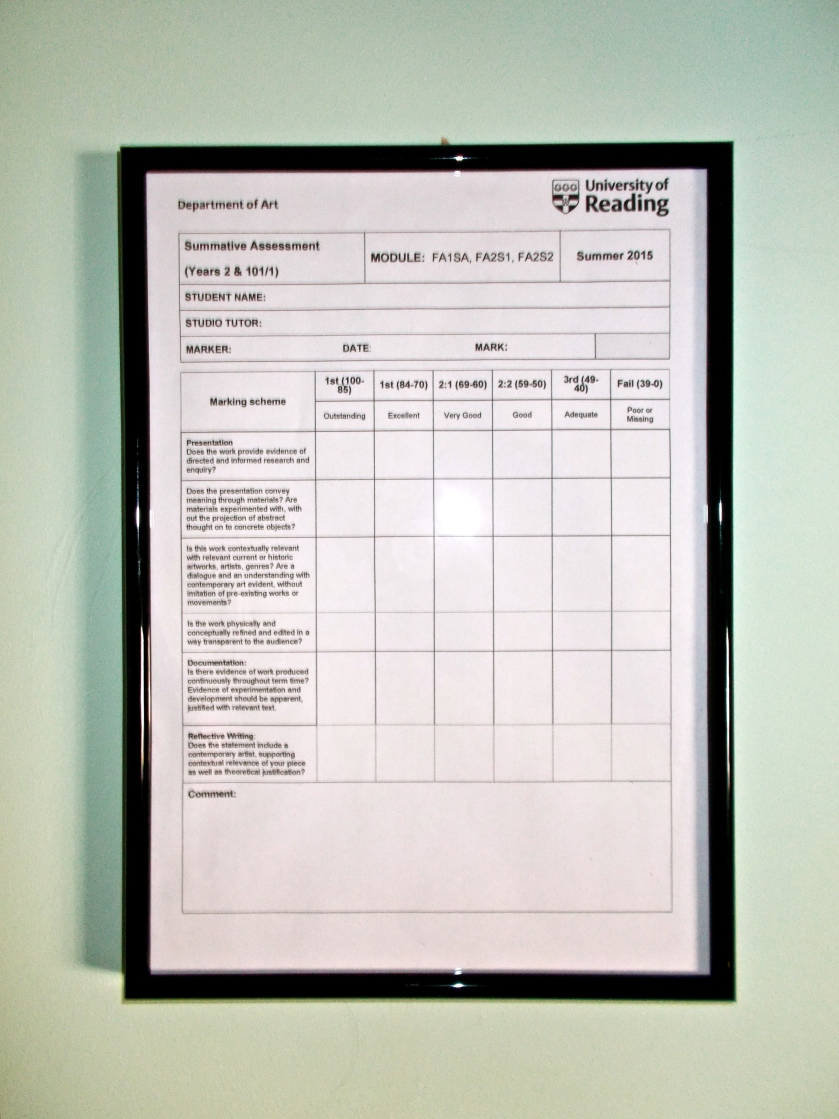
Art scheme
Art Scheme
Finally, the mark scheme is another tool that is used to highlight some flaws in an art institution. The wording remains fairly similar to the official document, so that close analysis reveals it’s true meaning. This piece should also be relevant to academics, because it is a document they are familiar with.
